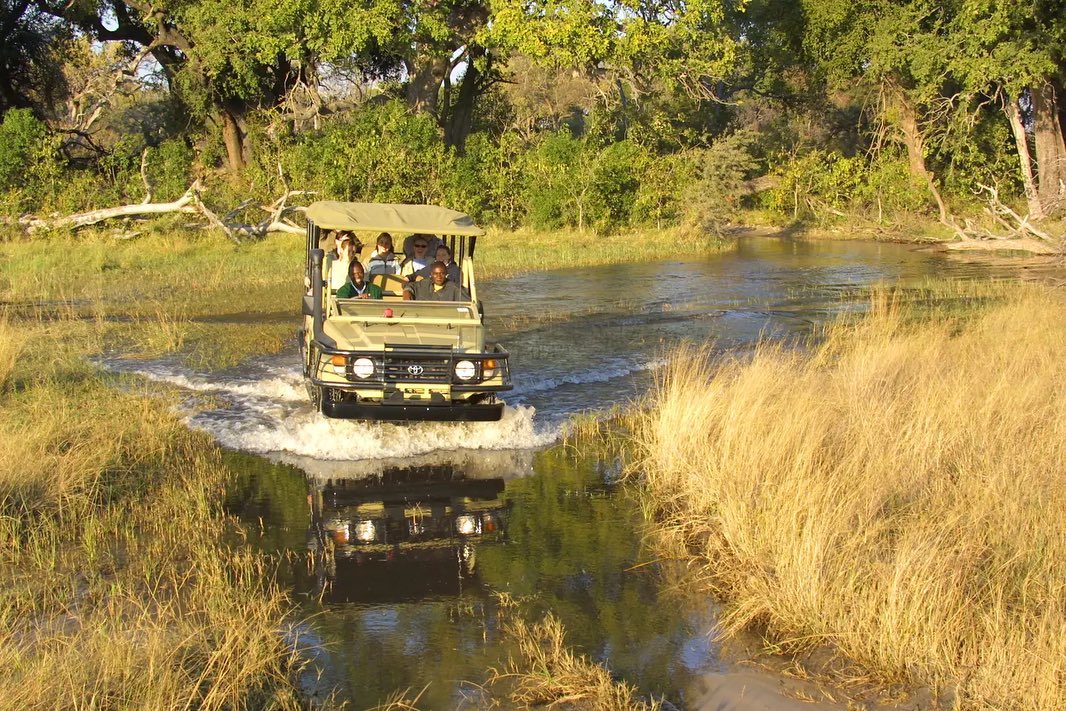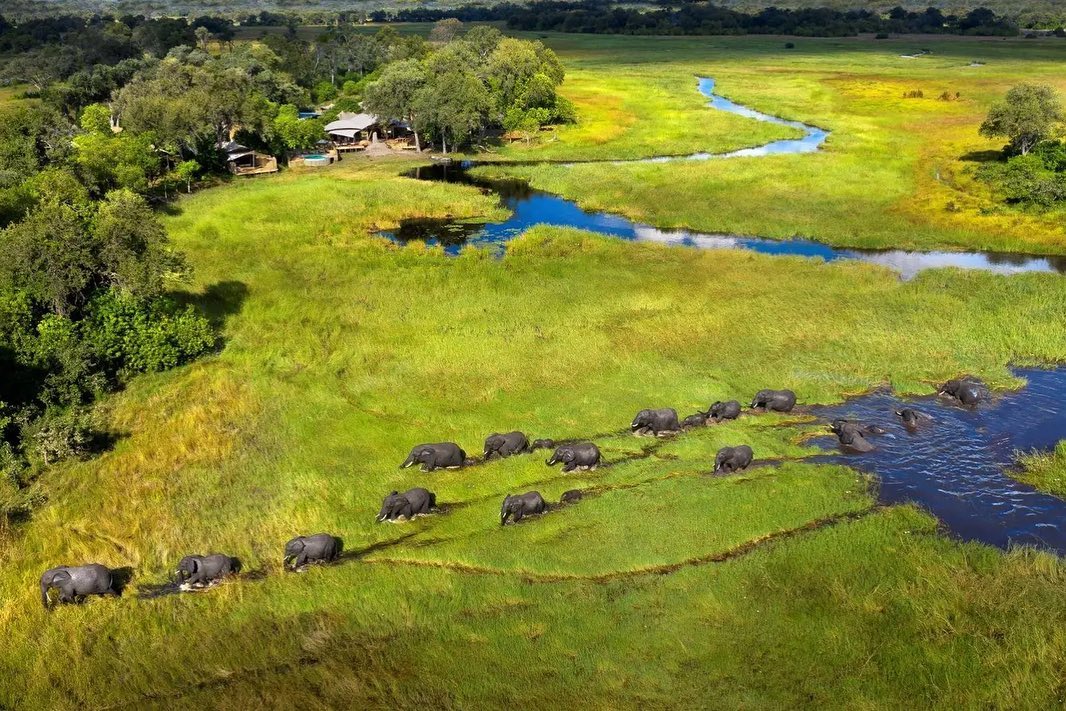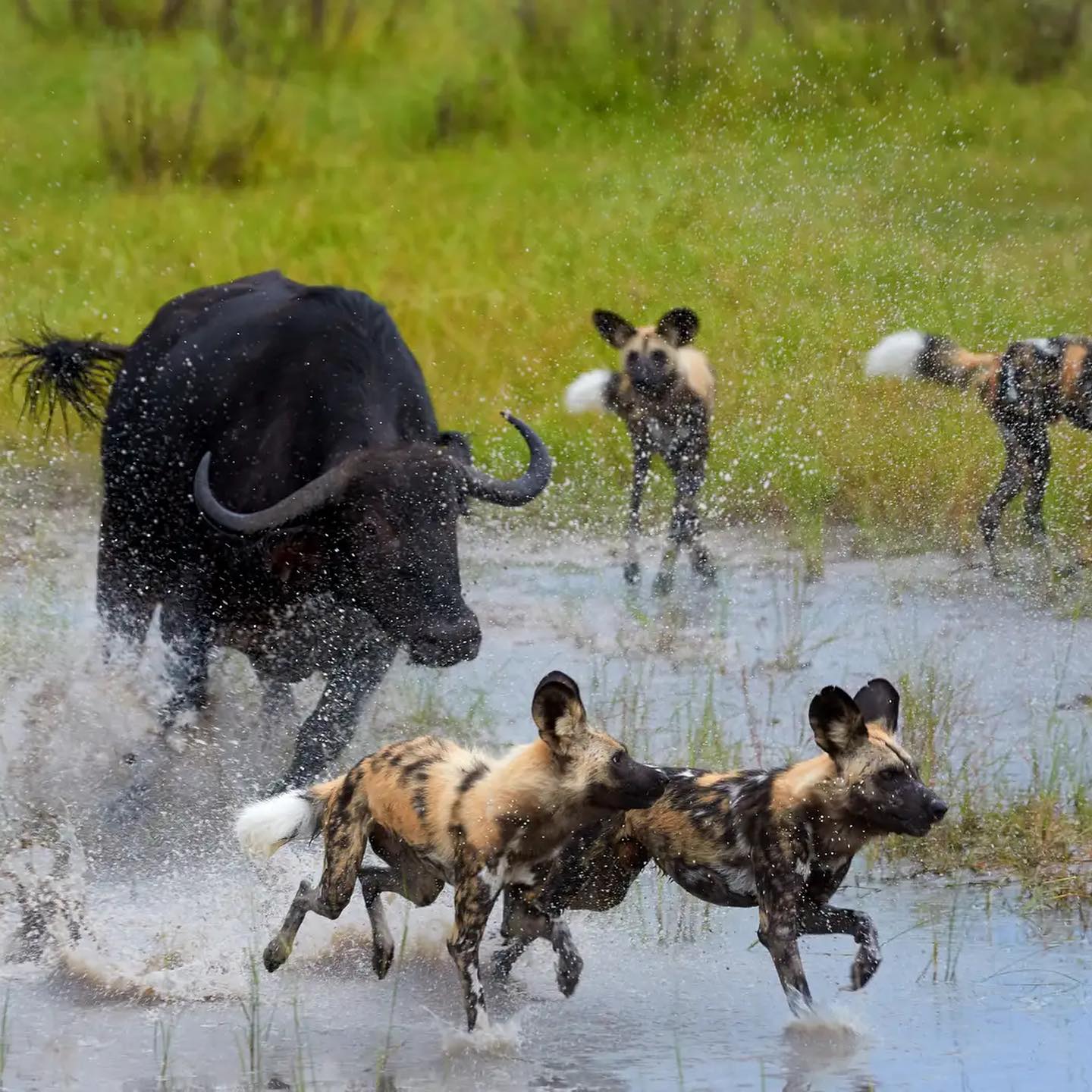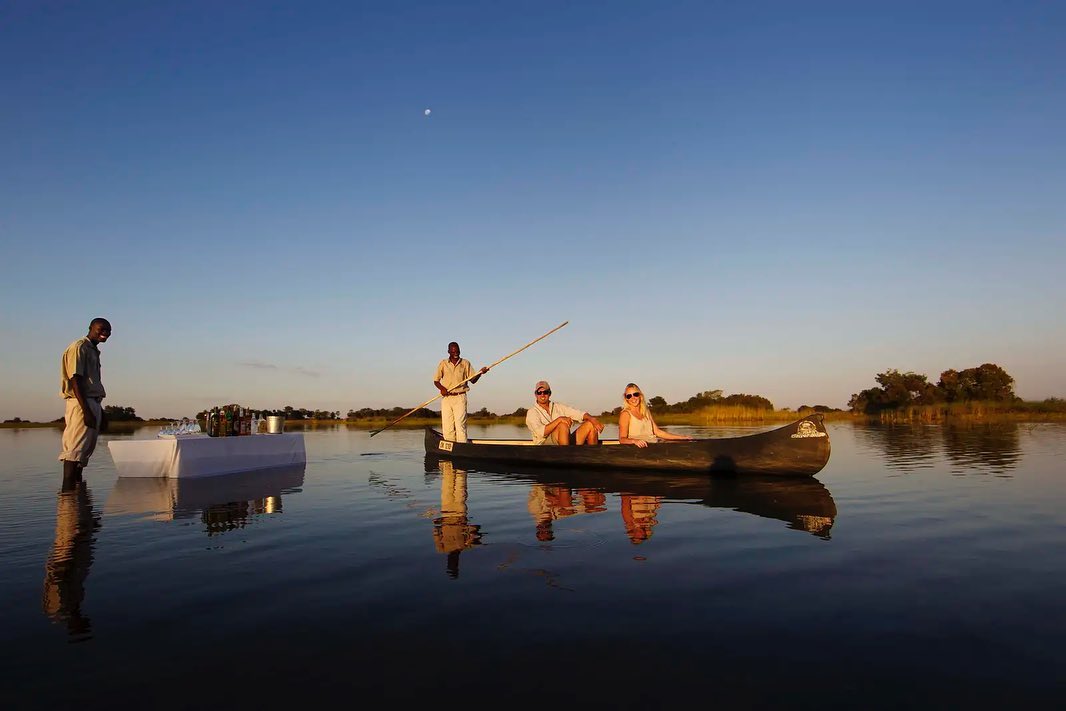The Okavango Delta Is Not What You Expect
When is the best time to visit the Okavango Delta? Hint: It’s not when you
think it should be.
If transformative travel and spectacular wildlife are your reasons for traveling, the Okavango Delta should be number one on your bucket list.
Ask those who have been before you: you arrive full of anticipation and leave profoundly changed. This is a regenerative destination like no other.
Our client, Su from the US, says it all:
Mel de Toit is definitely worthy of FIVE stars. She has helped us put together a
trip of a lifetime. Our first safari is at Simbavati and the second is at Chief’s
Camp, in the Okavanga Delta … We can't wait to start our journey and know
that thanks to Mel, it will be the trip of a lifetime!
Expect the unexpected. There may be vast floods of water, there may be huge
grassland floodplains. It depends on the unpredictable waters.
The Upside Down Delta

We can agree that the Green Season (or wet months) in southern Africa is the rainy months, roughly October to April, and peaking in November to March. So you’d naturally assume those months would be the flood months in the Okavango Delta.
But you would be wrong. In this unique place, the waters are highest in the dry
season, from July to October.
Why does this happen? The answer lies in the geography.
The waters of the Okavango Delta rise in the Angolan highlands, flowing southwards through Namibia in the Cubango and Cuito rivers. These rivers merge near Dirico, on the Angola-Namibia border, to form the Okavango River, which flows through the Zambezi Region of Namibia (it used to be called the Caprivi Strip) and into Botswana, where it forms the Okavango Delta.
The Floods Are Coming to the Okavango Delta

The seasonal rains in Angola come between October and April, peaking between December and March. They meander down the continent, reaching the Delta in March, where they slowly dissipate over the months to August. Peak levels are in June and July.
But it’s not that cut and dried, and Delta veterans are known to run a fun, informal bet on when the waters will come.
The best time to visit the Okavango Delta for wildlife viewing is from July to October, which are the best month for mokoro trips But July and August can be busy, so early bookings are essential.
Our client Joseph SB was pleased with his choice:
Definitely a bucket list item fulfilled. Seeing all the big 5 up close and personal
is something I will never forget.
From November to March, a lot of wildlife remains in the heart of the Delta, which has permanent water and is fairly inaccessible to humans. There is less wildlife around and water levels may be too low for mokoro trips. But there are loads of baby animals, which attract predators. And it’s the best time for birdwatching as migratory birds flock to the region.
Best weather: May to August, when it is not too hot
Hottest period: October, often called ‘suicide month’ among the Maun locals because it is so hot and dry.
The Okavango Delta Landscape

The region is a mix of permanent marshlands and seasonally flooded grasslands. It is one of very few major interior delta systems that do not drain into a sea or ocean. It’s an extraordinary juxtaposition of vibrant wetland in an arid landscape, with an astounding transformation of dry, sandy depressions by winter season floods.
And it is home to some of the world’s most endangered species of large mammal – elephant, white rhino, black rhino. There are big cats and you will likely spot lions, leopards and cheetahs – the grasslands are the perfect hunting ground for these sleek, super-fast predators.
The Okavango Delta is also home to large, wide-ranging packs of African wild dogs.
And plenty of hippo pods. Did you know that a group of hippos is also called a bloat of hippos?
The Mekoro of the Okavango Delta

You can’t visit the Delta without a gentle paddle in a mokoro, which is sort of like a traditional canoe. Traditionally, mekoro (the plural) are dug out from the trunks of large, straight trees, such as ebony or kigelia (sausage tree).
This is not sustainable in the modern world, and mekoro today are generally made from fiberglass.
This is the most peaceful way to safari. It is so quiet and still. The only sounds are the birds, the grunting hippos and the soft splash of the nkashi (the pole). You sit only a few centimetres above the water, which gives an entirely new perspective and encounters with the tiny, colourful reed frogs.
We arrange the perfect tours, as Jim C from Australia says:
Jayson was a polite and knowledgeable person … He was very understanding
when we had to ‘delay’ our plans … We have every intention of pursuing our
dream of visiting Africa in the 2025/26 season and we will certainly be in-touch
with Jayson.
Don’t worry about capsizing. The people here are experts, and learn to paddle a mokoro from about seven years old.
Travel Tips for Visiting The Okavango Delta
Northern Botswana is prone to malaria, particularly during and immediately after the rainy season in November to April, so take precautions.
Pack for hot and cold and dress in layers. Bring a hat for sun protection, lip balm and
a book for those peaceful afternoon siestas.
Mornings and evenings can be chilly, but days can be scorching.
Plan Your African Safari Now
Whether you’re looking to join one of our expertly curated safaris or prefer a bespoke journey, trust Safari.com to guide you through every step.
Our seasoned travel advisors can craft the safari of a lifetime tailored to your needs, budget and travel goals.
Get started by emailing [email protected]
Or start chatting to an expert now by clicking the WhatsApp link above.

